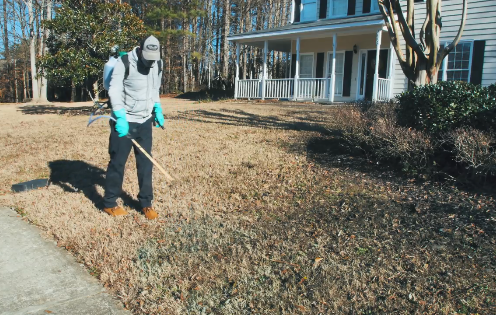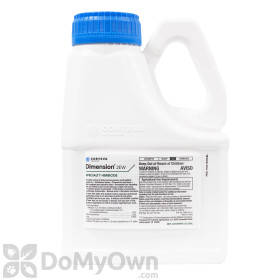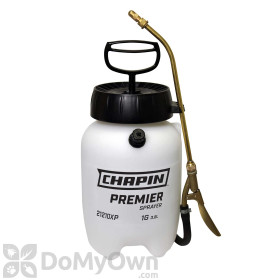
Goosegrass, also known as silver crabgrass, is an unsightly weed that can invade lawns in late spring and early summer.
If your lawn is prone to goosegrass and you have had goose grass in your lawn previously, there are several steps you can take to stop the weed from returning. Read below to learn more.
Apply Split Pre-Emergent Herbicide Applications

Pre-emergent herbicides prevent weeds from germinating and growing in your lawn. Most pre-emergents are applied in early spring when soil temperatures are below 55 degrees in order to stop weeds that germinate in March and April like crabgrass and nutsedge from growing. However, goosegrass germinates in late spring when soil temperatures are around 63-65 degrees, often after early spring pre-emergent applications have broken down and are no longer effective.
By applying two pre-emergent herbicide applications in the spring, spaced five to ten weeks apart, you can prolong the effects of the herbicide and stop late germinating weeds like goosegrass from growing.
Follow the instructions on the label of your pre-emergent herbicide for how to space the applications and how much product to apply in each application.
Products needed for Step 1
Improve Lawn Conditions

Goosegrass is most commonly found in turf that is sparse with compacted soil, poor drainage, and grass that has been mowed short. By increasing the health of your lawn, you can naturally help avoid goosegrass in the future.
Address the following in your lawn to help prevent goosegrass:
- Keep grass blades at least 1 inch long throughout the summer. Mowing shorter can stress the turf, making it more susceptible to weeds.
- Aerate your soil. Use an aerator at the beginning of spring (before you apply your pre-emergent herbicide) to break up compacted soil.
- Seed thin patches of turf. Apply grass seed to thin patches of turf in the fall to help the areas fill in and crowd out spring and summer weeds.
- Fix moisture issues. Add proper drainage to your lawn to prevent water from pooling.
- Install walkways and paths where possible. Goosegrass is often found in turf with high foot traffic. Add a walkway with pavers or wood when possible to reduce the amount of time walking on turf.
Products needed for Step 2
If you have any questions about the methods discussed in this article or the products needed to prevent and kill goosegrass, give our lawn care experts a call at 866-581-7378 or email [email protected].














